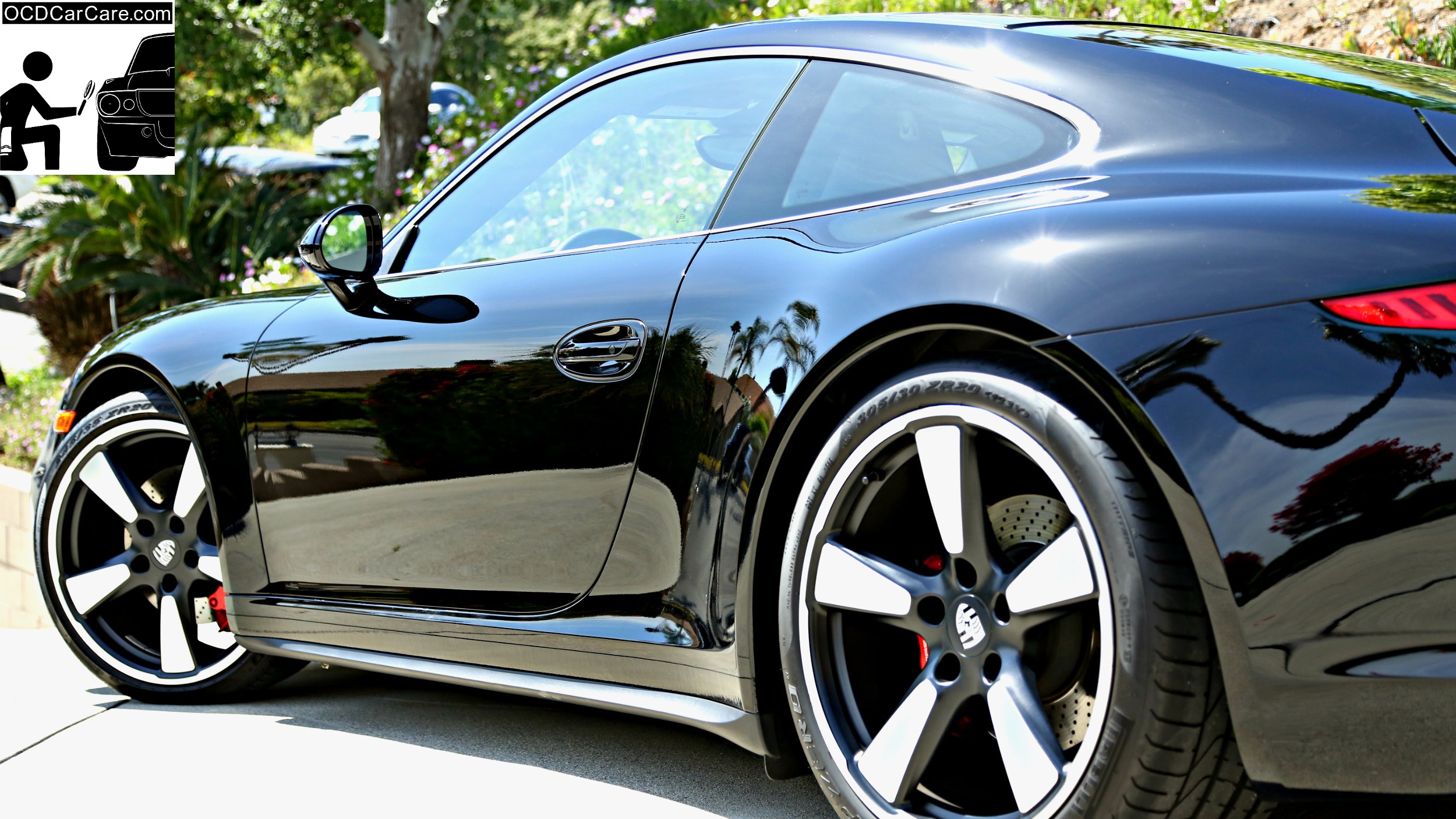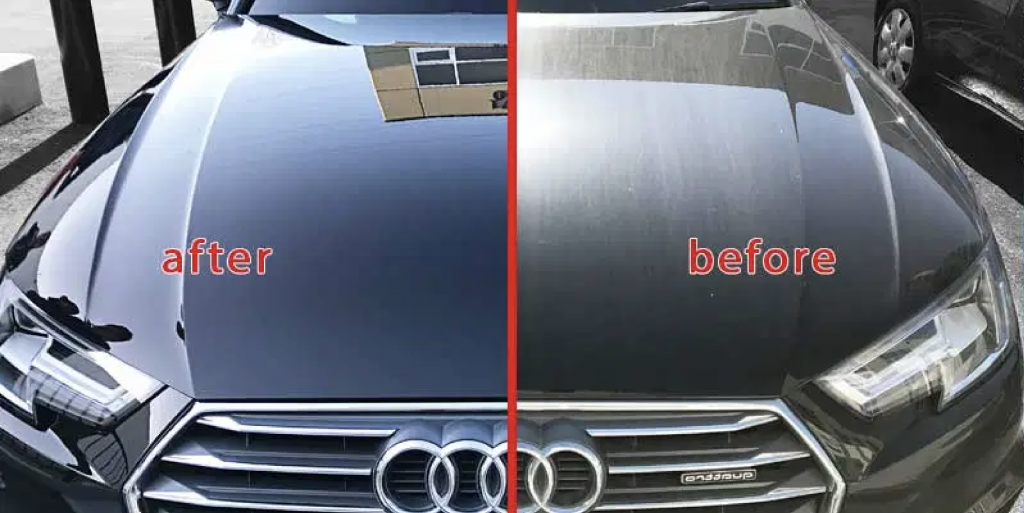Exactly How Explaining Porcelain Layer Boosts the Durability of Your Vehicle's Paint
Ceramic finish has become an essential technology in automobile detailing, supplying a resilient service for maintaining the stability of your vehicle's paint. By developing a protective layer that successfully defends against UV rays, chemical stains, and environmental pollutants, this ingenious coating not just boosts the visual allure of the car yet also adds to its overall durability. Recognizing the complexities of just how ceramic layer works and its benefits over typical wax can offer beneficial understandings for vehicle proprietors. What variables should you consider before making the investment?
What Is Ceramic Layer?
Understanding the protective advantages of ceramic covering starts with identifying its make-up and capability. Ceramic finish is a liquid polymer put on the exterior surface areas of lorries, largely created to boost and secure automobile paint. The essential part of this finishing is silicon dioxide (SiO2), which is stemmed from natural products like sand. This compound creates a solid chemical bond with the factory paint, creating a safety layer that is both resilient and hydrophobic.
The coating's application entails precise prep work of the car's surface, which must be devoid of pollutants, scrapes, and flaws to guarantee ideal attachment. When used, the ceramic covering remedies to form an inflexible shield that can stand up to various environmental variables, consisting of UV rays, chemical discolorations, and oxidation.
Furthermore, ceramic coatings are not just surface-level therapies; they pass through the paint to offer an enduring defense. This performance extends the life expectancy of the lorry's looks while keeping its worth in time. Understanding these essential facets of ceramic covering is vital for auto owners seeking effective services for paint conservation and improvement.
Benefits of Ceramic Coating
The benefits of ceramic layer expand far past its basic safety features. Unlike traditional wax or sealants, ceramic finishes develop a solid bond with the car's paint, allowing it to withstand environmental threats such as UV rays, acid rainfall, and roadway salt.
Furthermore, ceramic coverings provide hydrophobic properties, meaning they ward off water and contaminants. This particular not only makes the automobile less complicated to clean however also reduces the frequency of cleaning, saving both effort and time for car proprietors. The slick surface created by the finish protects against dust and grime from adhering, improving the vehicle's overall tidiness.
Additionally, ceramic coatings boost the depth and clearness of the paint, providing cars a glossy coating that is aesthetically striking. This visual improvement further contributes to keeping the automobile's resale value, as a well-maintained outside is a major selling factor for possible buyers. On the whole, the advantages of ceramic covering make it a beneficial financial investment for any person wanting to safeguard and boost their lorry's paintwork.
Exactly How Ceramic Covering Works

The coating's hydrophobic homes push back water and dust, protecting against the build-up of crud on the surface. This not only makes the vehicle easier to tidy yet likewise reduces the likelihood of scratches and swirl marks triggered by standard cleaning approaches. The ceramic layer acts as a shield against UV rays, which can create fading and oxidation over time.
Once treated, the finishing displays remarkable resistance to chemicals, including road salts, bird droppings, and tree sap, which can otherwise damage the paint. The durability of ceramic coverings can last for several years, depending upon variables such as upkeep and environmental conditions. Overall, the chemical bonding procedure of ceramic finishings provides a durable protection that maintains the stability and look of a car's paintwork.
Comparing Ceramic Coating to Wax
Contrasting ceramic layer to traditional wax discloses considerable distinctions in efficiency and durability. While both items aim to shield an automobile's paint, their structures and toughness set them apart. Wax, normally made from natural carnauba or artificial products, provides a temporary shield that normally lasts just a few weeks to a few months, depending on ecological problems and maintenance regimens.
On the other hand, ceramic coverings are sophisticated options composed of not natural materials that bond chemically with see the automobile's paint. This develops a robust, semi-permanent layer of protection that can endure for a number of years. Therefore, ceramic finishes use superior resistance to UV rays, chemical stains, and physical abrasion, dramatically lowering the danger of oxidation and fading.
Additionally, the hydrophobic residential properties of ceramic layers make certain that water grains up and rolls off the surface, making it harder for dust and grime to adhere. This convenience of cleaning is a remarkable benefit over wax, which can attract dust and need regular reapplication. Inevitably, for automobile proprietors looking for durable protection and improved visual appeal, ceramic layers offer a more effective choice to conventional wax items.
Maintenance Tips for Durability
Correct upkeep is essential for maximizing the long life of a ceramic finish. Normal cleaning is the foundation of efficient maintenance. Use a pH-balanced vehicle shampoo to avoid degrading the covering, and prevent automated cars and truck cleans with rough brushes that can trigger micro-scratches. Instead, choose a touchless automobile wash or hand laundry.
To keep the hydrophobic homes of the ceramic covering, take into consideration using an upkeep spray or booster especially created for ceramic finishings every couple of months. This will certainly enhance the safety layer and improve water beading.
Furthermore, avoid subjecting the covered surface area to severe ecological conditions whenever feasible. Vehicle parking in shaded areas or making use of a vehicle cover can stop UV damage and contamination from bird droppings, tree sap, or commercial fallout.
Finally, check the coating regularly for indications of wear or damage. If you see a reduction in hydrophobic behavior, it might be time for an expert reapplication. By sticking to these maintenance suggestions, lorry owners can dramatically prolong the life and efficiency of their ceramic coating, making sure that their auto's paint remains protected and aesthetically appealing for years to find.
Verdict
